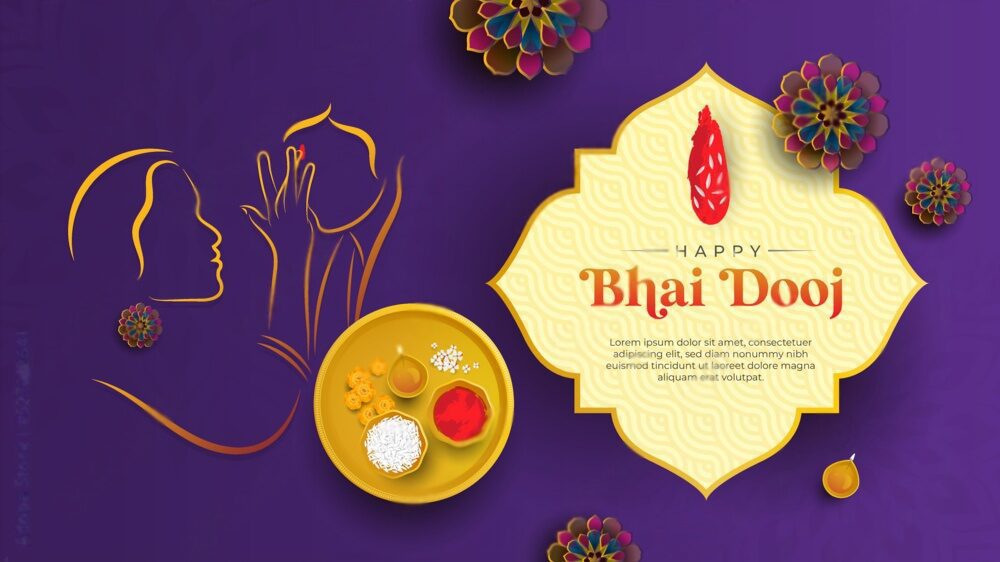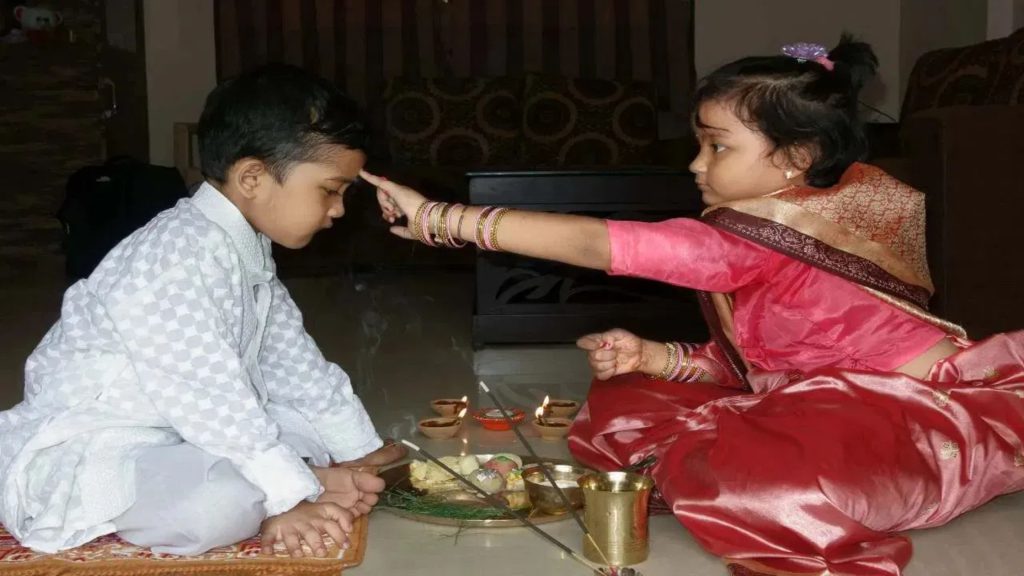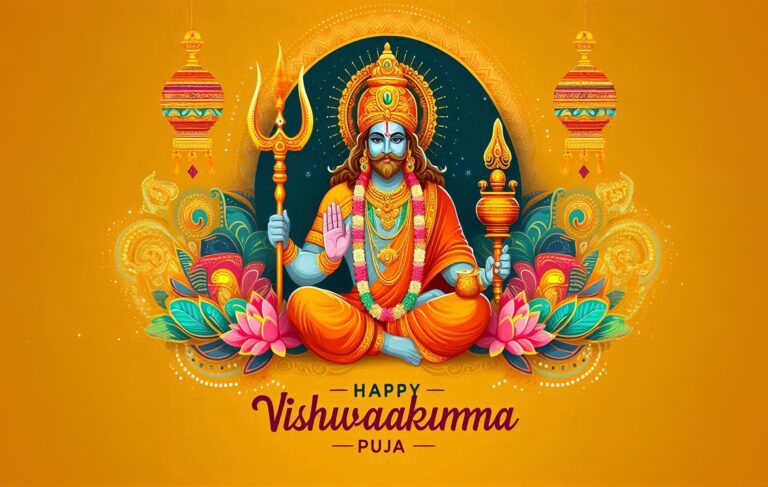Bhai Dooj 2023: Significance, Yam Dwitiya, Date & Time, and popular food items
"Embracing the eternal bond of love and protection, Bhai Dooj is a celebration of the unique connection between siblings, a day to cherish the unbreakable ties of the heart."

Bhai Dooj 2023: In the vibrant tapestry of Indian festivals, Bhaidooj, also known as Bhai Dooj or Bhai Phota, is a celebration that pays homage to the beautiful bond shared between brothers and sisters. This year it is being celebrated on 14th November, 2023. This special occasion, which typically falls on the second day after Diwali, holds a significant place in the hearts of millions across the country.
As we delve into the essence of Bhaidooj, let’s explore the traditions, significance, and the heartwarming rituals that make this festival so unique.

Historical Significance
Bhaidooj’s roots can be traced back to ancient Indian mythology. According to one popular legend, Yamraj, the god of death, visited his sister Yami on this day. Yami welcomed her brother with an aarti, a traditional Indian ritual of offering light to the deities. Touched by her love and devotion, Yamraj bestowed her with a boon that anyone who visits their sister on this day and receives her blessings will be protected from an untimely death. This story has immortalised the brother-sister bond as a symbol of protection and love.
Bhai Dooj 2023: Timings and Muhurat
Bhai Dooj: Tuesday, November 14, 2023
Bhai Dooj: Aparahna Time – 01:10 PM to 03:19 PM
Duration: 02 Hours 09 Mins
Dwitiya Tithi Begins: 02:36 PM on Nov 14, 2023
Dwitiya Tithi Ends: 01:47 PM on Nov 15, 2023
Significance of Yama- Dwitiya on Bhai Dooj
In ancient times, there was a devoted sister named Yamuna, who was the sister of Lord Yama (Yamraj). She had deep affection for her brother and wanted to serve him with utmost hospitality. On Kartik Shukla Dwitiya, Yamuna prepared a grand feast at her house. She invited Lord Yama to her home and treated him with love and respect. She served him a variety of delicious food and showed exceptional hospitality.
Touched by his sister’s love and hospitality, Lord Yama was pleased. As a result of Yamuna’s devotion and service, he decided to bestow a boon upon her. Lord Yama granted her a special blessing that on the day of Yama-Dwitiya, all those who perform acts of devotion and hospitality to their brothers or sisters will be freed from the torments of hell. They will also be cleansed of their sins and released from the bondages of life. This blessing extended to all living beings.

From that day onwards, people started observing Yama-Dwitiya as a day of expressing their love and affection to their brothers and sisters. It became a tradition to celebrate this festival by offering gifts, sweets, and performing rituals that signify the bond of siblings. It is believed that by doing so, individuals can seek the blessings of Lord Yama and ensure the well-being and long life of their siblings.
The celebration of Yama-Dwitiya not only became popular in the earthly realm but also brought happiness to the kingdom of Yamlok (the realm of Lord Yama). It is said that this day marked the end of suffering and the beginning of joy in Yamlok.
Why do we light a lamp on Yam Dwitiya?
The lighting of lamps on Yam Dwitiya holds special significance in Hindu culture.This festival falls on the second day of the bright fortnight (Shukla Paksha) in the Kartik month of the Hindu Lunar calendar, typically two days after Diwali. It is a day dedicated to celebrating the bond between brothers and sisters, and the lighting of the lamps is an important ritual associated with it . Here is the significance of lighting lamps on Yam Dwitiya.
Honouring Lord Yama: Yama-Dwitiya is named after Lord Yama, the god of death and the brother of Yamuna. Lighting lamps is a way to pay homage to Lord Yama and seek his blessings for the well-being and long life of one’s siblings. It is believed that lighting lamps on this day can help protect the family from untimely death and misfortunes.
Symbol of Warmth and Love: Lamps are a symbol of warmth and love. Lighting lamps signifies the dispelling of darkness and the illumination of one’s life with positivity and love. It serves as a reminder to strengthen the bond between siblings and to express affection and care towards each other.
Traditions and Rituals
1. Sisterly Love: On Bhai Dooj, sisters eagerly await the arrival of their brothers. They perform an aarti and apply a tilak (a red vermillion mark) on their brothers’ foreheads as a symbol of love and protection. Sisters then offer sweets and gifts to their brothers, expressing their affection.
2. Brotherly Promise: Brothers, in return, bless their sisters and promise to protect them from all hardships and adversities. This is a heartwarming moment of love and commitment.
3. Gifting Tradition: Exchanging gifts is an essential part of Bhaidooj. Sisters prepare a delightful spread of their brothers’ favourite dishes and present them with thoughtful gifts. In return, brothers shower their sisters with presents, symbolising their love and appreciation for each other.
4. Feasting: Bhaidooj is not just about rituals; it’s also about relishing delicious food. Sisters prepare special dishes for their brothers, and families come together to enjoy a grand feast. It’s a time of bonding and celebration.
5. Creative Rangoli: In some regions of India, sisters create beautiful rangoli designs at the entrance of their homes to welcome their brothers. This adds a colourful touch to the festivities.
Significance in Modern Times
While Bhaidooj’s significance is rooted in tradition, it has adapted to modern times. It’s no longer just about brothers and sisters living under the same roof. With the advent of technology, siblings separated by distance can connect virtually to celebrate this special day.
Bhaidooj serves as a reminder of the deep and unbreakable bond between siblings. It encourages people to set aside their differences and come together to celebrate the love, support, and protection they offer one another. In a rapidly changing world, this festival is a symbol of the enduring family ties that provide a sense of belonging and security.

Final Thoughts
Bhaidooj is a beautiful celebration of the unbreakable bond between brothers and sisters. It reflects the values of love, protection, and commitment, which are at the core of Indian culture. In today’s fast-paced world, Bhaidooj offers a precious opportunity to cherish and strengthen the ties that bind families together. As siblings exchange heartfelt gestures and gifts, Bhaidooj remains a testament to the enduring power of love and family bonds.
Frequently Asked Questions
- Q1. What is Bhai Dooj?
- Bhai Dooj, also known as Bhai Phota in Bengal, Bhai Tika in Nepal, and Yama Dwitiya in other regions, is a Hindu festival that celebrates the bond between brothers and sisters. It typically falls on the second day after Diwali.
- Q2. What is the significance of Bhai Dooj?
- Bhai Dooj is significant as it symbolises the love, respect, and mutual protection between siblings. It is a day when sisters pray for the well-being and longevity of their brothers, and brothers offer gifts and blessings to their sisters.
- Q3. How is Bhai Dooj celebrated?
- On Bhai Dooj, sisters apply a tilak (vermilion mark) on their brothers’ foreheads, perform aarti, and exchange gifts. Brothers, in turn, offer gifts and give blessings to their sisters. Families often come together, share meals, and spend quality time with each other.
- Q4. What are the typical gifts exchanged on Bhai Dooj?
- Common gifts include clothing, sweets, chocolates, and decorative items. Sisters may also receive money or gift vouchers from their brothers. The choice of gifts can vary based on individual preferences and family traditions.





